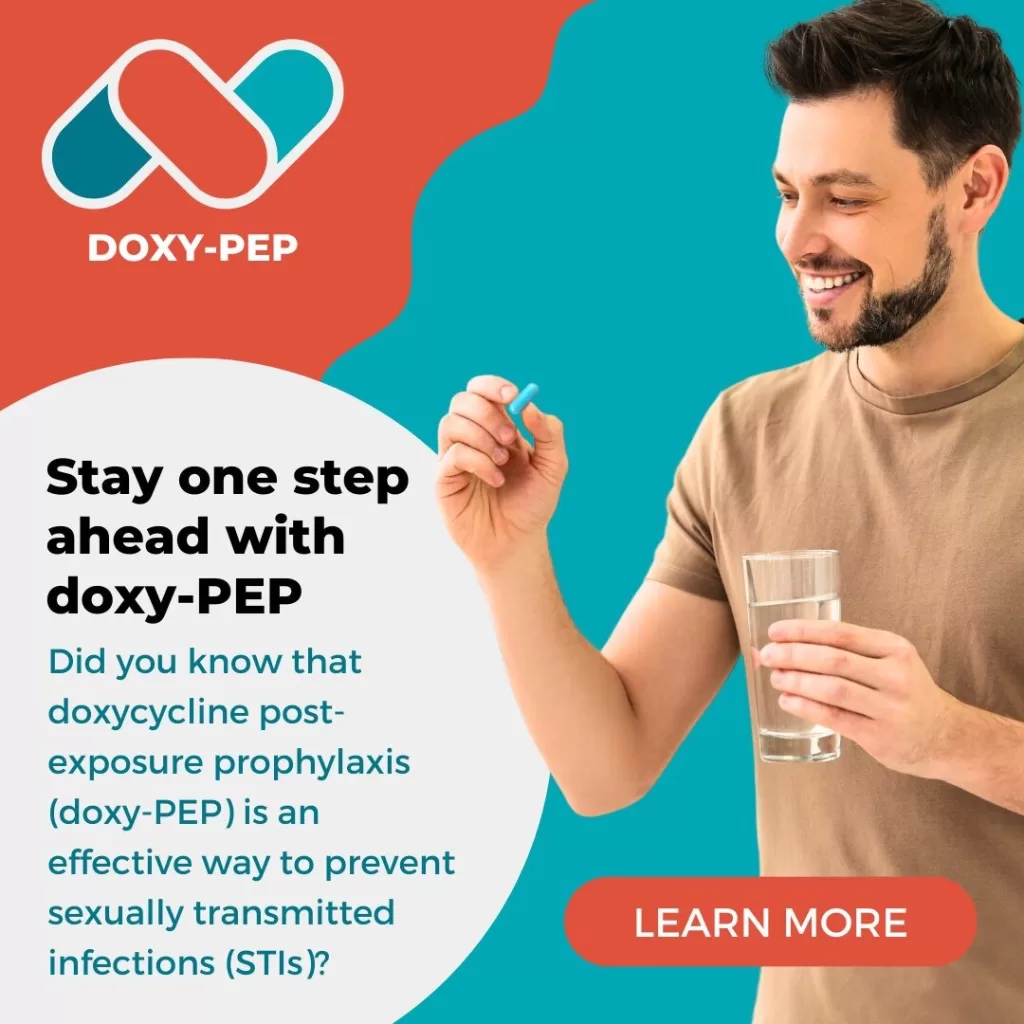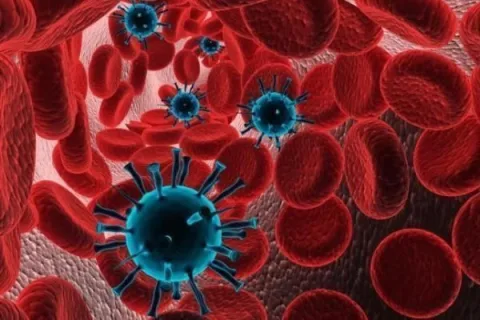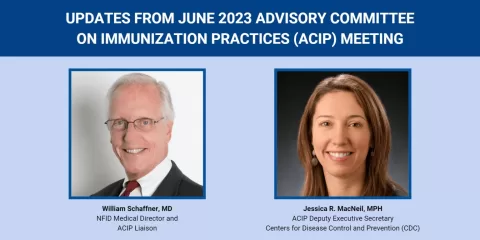Doxycycline post-exposure prophylaxis (doxyPEP) is emerging as a groundbreaking intervention in the realm of sexual health. Recent studies have demonstrated that administering a dose of doxycycline within three days of unprotected intercourse can lead to remarkable reductions in sexually transmitted infections (STIs), notably chlamydia and syphilis. This innovative approach is particularly significant for men who have sex with men (MSM) and transgender women, who have been shown to benefit the most from doxyPEP usage. The Centers for Disease Control and Prevention has recognized these findings, recommending doxyPEP as a vital strategy for STI prevention in high-risk populations. As awareness and implementation of doxycycline effectiveness grows, so do the discussions about its role in enhancing sexual health intervention and overall STI prevention strategies.
In recent discussions surrounding doxycycline administration as a protective measure after potential exposure to STIs, many health professionals refer to it as “doxyPEP” or simply post-exposure prophylaxis. This strategy represents a pivotal shift in how the medical community addresses the surging rates of STIs, particularly among groups deemed at higher risk of infection. The documented effectiveness of this antibiotic highlights its role not only in personal health management but also in broader public health objectives aimed at curbing infection transmission. As more research surfaces, the implications of doxyPEP could redefine preventive measures and propel innovative sexual health interventions forward, contributing to enhanced STI prevention strategies across diverse populations.
Understanding Doxycycline Post-Exposure Prophylaxis (DoxyPEP)
Doxycycline post-exposure prophylaxis, commonly referred to as doxyPEP, represents a significant advance in the realm of sexually transmitted infection (STI) prevention strategies. Specifically, it has shown exceptional promise in reducing incidents of chlamydia and syphilis among high-risk populations, particularly men who have sex with men (MSM) and transgender women. The cornerstone of doxyPEP’s effectiveness lies in its timely administration; taking a dose within 72 hours of unprotected sex can dramatically reduce the risk of STI acquisition. This proactive approach aligns well with modern sexual health interventions aimed at curving STI rates, which have been on the rise in recent years.
Recent studies highlight a staggering reduction—between 50% to 80%—in STI rates among those utilizing doxyPEP compared to those who did not. The findings from these real-world applications underscore the urgent need for broader public health integration of doxyPEP into routine sexual health practices. As more data emerges on doxyPEP’s efficacy, health departments are encouraged to consider it a standard part of STI prevention protocols, contributing to public health goals centered around improving sexual health outcomes.
Examining STI Prevention Strategies with Doxycycline
Doxycycline has emerged as a game-changing element in STI prevention strategies, especially for populations vulnerable to infections. The two recent studies published in JAMA Internal Medicine predominantly focused on populations engaging in high-risk sexual behavior, revealing that recipients of doxyPEP displayed significantly lower incidence rates of chlamydia and syphilis after the implementation of this strategy. With the Centers for Disease Control and Prevention (CDC) endorsing doxyPEP, health care providers are now in a position to utilize this treatment actively to combat rising STI statistics. Doxycycline’s mechanism of action against these pathogens allows for effective prophylactic measures, especially in urban settings with high STI prevalence, such as San Francisco.
However, it is important to recognize that while doxyPEP presents substantial benefits, its effectiveness against gonorrhea appears limited. Researchers suggest that the emergence of resistant strains of gonorrhea may play a role in this discrepancy. The ongoing evolution of antimicrobial resistance presents an obstacle to effective treatment options. Therefore, as doxycycline becomes integrated into more STI prevention strategies, continuous monitoring of antibiotic susceptibility and resistance profiles must be a priority to ensure the sustainable success of these interventions.
Doxycycline Effectiveness in Real-World Applications
The effectiveness of doxycycline in real-world applications has been underscored by the recent studies revealing the impact of doxyPEP among MSM and transgender women in different populations. By employing electronic health record data, researchers analyzed the outcomes pre- and post-doxyPEP implementation, showcasing an impressive 79% decline in chlamydia positivity rates among participants. This significant drop echoes findings from clinical trials, reinforcing the potency of doxycycline as an effective intervention in STI prevention within at-risk communities. The promising outcomes illuminate how practical implementations of doxyPEP can emulate—or even surpass—results observed in controlled clinical trials.
Furthermore, the ability of doxycycline to achieve robust reductions in STIs highlights the critical need for healthcare systems to adapt and promote such interventions actively. Coupled with education and awareness initiatives, doxyPEP could lead to a paradigm shift in STI prevention strategies. As health organizations and providers recognize the role of doxycycline in enhancing sexual health, we can expect future integration of such practices into primary care and community health settings specifically targeting MSM and transgender women.
The Role of Doxycycline in Sexual Health Intervention
Doxycycline, particularly when used as post-exposure prophylaxis, has redefined the landscape of sexual health interventions. Beyond traditional condom use, doxyPEP offers an innovative tool to curb the spread of STIs among populations at greater risk. With increasing rates of diseases such as chlamydia and syphilis, doxyPEP not only presents a feasible solution but also empowers individuals to take proactive steps towards their sexual health. This shift focuses on personalized sexual health practices tailored to individual behaviors and risks, moving the conversation around STIs from a purely reactive to a preventative stance.
Incorporating doxyPEP into existing sexual health frameworks requires collaborative efforts among health professionals, policymakers, and community organizations. Strategies must include educational campaigns that inform at-risk populations about the benefits and proper use of doxycycline, thereby overcoming barriers that tend to inhibit access and utilization. Allowing individuals to make informed choices about doxyPEP can enhance community health outcomes, reducing the overall burden of STIs and fostering healthier sexual practices.
Monitoring Antimicrobial Resistance with DoxyPEP Use
As doxyPEP gains traction in STI prevention, the potential for increased antimicrobial resistance remains a pressing concern. Research suggests that while doxycycline effectively decreases rates of chlamydia and syphilis, its performance against gonorrhea is less favorable, potentially due to the emergence of resistant strains. This reality creates a need for ongoing surveillance of STIs, offering critical insights into how doxycycline’s utilization might influence resistance patterns in various bacterial populations. The scientific community must remain vigilant to ensure that the benefits of doxyPEP do not inadvertently contribute to a broader public health crisis regarding resistant infections.
Positions advocating for the responsible use of doxycycline emphasize the importance of balancing its role in STI prevention with the vigilance warranted by antibiotic resistance. Future studies are essential to directly relate doxyPEP intake with clinical outcomes while assessing any resultant impacts on resistance trends. Monitoring mechanisms should be focused not only on STI rates but also on the resistance profiles of pathogens common to this demographic. By integrating antibiotic stewardship into public health initiatives surrounding doxyPEP, we can fortify both individual and community health while addressing the complexities of antimicrobial resistance.
Potential Benefits of DoxyPEP in Public Health
The introduction of doxyPEP as a public health response aims to significantly lower STI rates, especially in high-risk communities. By providing an immediate prophylactic option after potential exposure, doxycycline underscores a proactive approach to sexual health. Regular administration among targeted populations can potentially lead to a shift in the overall epidemiological landscape of STIs, moving from just managing outbreaks to preventing them before they escalate. Such interventions align with broader public health goals revolving around reducing infection rates and improving sexual health outcomes across diverse demographics.
In addition to its therapeutic benefits, doxyPEP may also reduce related healthcare costs by minimizing the incidence of common STIs, which can lead to more severe health complications if left untreated. By embracing antibiotic prophylaxis as a standard practice in sexual health, healthcare systems can alleviate the burden faced by caregivers and patients alike. Integration into existing health services, coupled with ongoing education efforts, can ensure that doxyPEP serves not only as a clinical tool but as a transformative element in public health visions aiming towards sustainable sexual health interventions.
Challenges and Considerations for Wider DoxyPEP Implementation
Despite the promising efficacy of doxycycline in STI prevention, several challenges hinder widespread implementation of doxyPEP. Chief among them is the healthcare infrastructure’s ability to support the immediate dispensing of doxycycline after potential exposure, particularly in regions with limited access to sexual health services. Preliminary results indicate a strong interest in doxyPEP amongst MSM and transgender women, yet logistical barriers such as educational outreach, training for healthcare providers, and accessibility to the medication need to be addressed. Without concurrent efforts focused on these areas, the potential of doxyPEP may not be fully realized.
Furthermore, community resistance and stigma surrounding STI discussions can complicate the integration of doxyPEP into public health strategies. Communities that may benefit the most from this preventive measure might also harbor reluctance to engage in conversations about STI prevention due to social stigma. Addressing these concerns through community engagement, tailored outreach programs, and partnerships with local organizations can facilitate a smoother adoption process. An inclusive approach ensures that doxyPEP becomes a trusted, widely accepted option within the sexual health toolbox while addressing unique community needs.
Future Directions for Doxycycline Research and Use
DoxyPEP represents just one of many potential innovations in the fight against STIs; however, ongoing research is imperative for its future success. Continuous evaluation of doxycycline’s effectiveness, potential resistance issues, and its role within broader sexual health strategies will inform how health systems adapt to emerging challenges. Research must also explore longitudinal outcomes of doxyPEP usage among various populations, assessing both immediate efficacy in STI prevention and any long-term implications regarding resistance patterns. This multifaceted approach could unlock deeper insights, positioning doxyPEP as a cornerstone in STI public health strategies.
Additionally, there’s a critical need for ecological studies that investigate the socio-behavioral factors influencing the uptake and adherence to doxyPEP. Understanding community dynamics—the barriers and facilitators to doxyPEP acceptance—will contribute valuable context to preventive health strategies. By knitting together clinical efficacy with the realities of human behavior, future directions for doxycycline research can ensure that interventions are not only scientifically sound but also socially relatable and widely accessible.
Frequently Asked Questions
What is doxycycline post-exposure prophylaxis (doxyPEP) and how does it work?
Doxycycline post-exposure prophylaxis, commonly referred to as doxyPEP, is a preventive treatment that involves taking a dosage of doxycycline within 72 hours of potential exposure to sexually transmitted infections (STIs) during unprotected sex. It has been shown to significantly reduce the incidence of STIs such as chlamydia and syphilis, particularly among men who have sex with men (MSM) and transgender women.
How effective is doxycycline post-exposure prophylaxis for STI prevention?
Research indicates that doxycycline post-exposure prophylaxis (doxyPEP) can decrease the incidence of chlamydia and syphilis by 50% to 80% within certain populations, including MSM and transgender women. A study showed that participants who took 200 mg of doxycycline after unprotected sex experienced significant reductions in STI rates, while the effectiveness against gonorrhea was less pronounced.
Who should consider using doxyPEP for STI prevention?
Doxycycline post-exposure prophylaxis (doxyPEP) is recommended primarily for men who have sex with men (MSM) and transgender women with a history of STIs. The intervention is advised in contexts where individuals are at high risk for STIs, particularly following unprotected sexual encounters.
Are there any side effects associated with doxycycline post-exposure prophylaxis?
Doxycycline is generally well-tolerated; however, possible side effects may include gastrointestinal disturbance, increased sensitivity to sunlight, or allergic reactions. It is important for individuals considering doxyPEP to discuss potential side effects with their healthcare provider.
Is doxyPEP a standalone solution for sexual health intervention?
While doxycycline post-exposure prophylaxis (doxyPEP) is a valuable addition to STI prevention strategies, it is not a standalone solution. It should be combined with other sexual health interventions such as regular STI screenings, condom usage, and open communication with sexual partners to ensure comprehensive protection against STIs.
Can doxycycline post-exposure prophylaxis prevent gonorrhea?
Current studies suggest that doxycycline post-exposure prophylaxis (doxyPEP) is less effective against gonorrhea compared to its efficacy against chlamydia and syphilis. Some researchers speculate that resistance to doxycycline in gonorrhea strains may contribute to this decreased effectiveness, underscoring the need for additional strategies to combat this particular infection.
How has doxyPEP impacted STI rates in real-world settings?
Real-world studies of doxycycline post-exposure prophylaxis (doxyPEP) implementations in cities like San Francisco and among HIV pre-exposure prophylaxis (PrEP) users have reported significant decreases in chlamydia and syphilis cases, illustrating the intervention’s potential efficacy outside of clinical trials and showing promise for broader adoption.
What are the recommendations from health authorities regarding doxyPEP?
In June 2024, the Centers for Disease Control and Prevention (CDC) recommended doxycycline post-exposure prophylaxis (doxyPEP) for MSM and transgender women with a history of STIs, based on robust evidence demonstrating its effectiveness in reducing the incidence of STIs, particularly chlamydia and syphilis, in targeted populations.
What ongoing research is being conducted on doxycycline post-exposure prophylaxis?
Ongoing research aims to evaluate doxycycline post-exposure prophylaxis (doxyPEP) related to its long-term effectiveness, sustainability, and impact on antimicrobial resistance. Future studies will also explore correlations between doxyPEP usage and STI transmission rates, enhancing the understanding of this intervention’s role in sexual health.
| Key Studies | Study 1: SFDPH Evaluation | Study 2: KPNC Evaluation | |
|---|---|---|---|
| Evaluated city-wide STI incidence before and after releasing doxyPEP guidelines in San Francisco. | Analyzed STI rates among HIV PrEP users who were dispensed doxyPEP from November 2022 to December 2023. | ||
| Found 49.6% reduction in chlamydia and 51.4% reduction in early syphilis among MSM and transgender women, with gonorrhea cases rising by 25.6%. | Reported 79% decrease in chlamydia and 80% decrease in syphilis positivity among doxyPEP recipients; gonorrhea positivity decreased only by 12%. | ||
| Study highlighted that doxyPEP uptake was 19.5%, showing strong interest among targeted populations. | This study indicated that doxyPEP led to significant STI reductions comparable to clinical trials, suggesting real-world effectiveness. | ||
Summary
Doxycycline post-exposure prophylaxis (doxyPEP) is demonstrating promising results in reducing the incidence of sexually transmitted infections (STIs) such as chlamydia and syphilis among men who have sex with men (MSM) and transgender women. The latest studies reveal that timely use of doxycycline can lead to substantial decreases in these infections, addressing the urgent public health challenge of rising STIs. While the intervention shows less effectiveness against gonorrhea, it offers a valuable tool for STI prevention in certain populations. Ongoing monitoring and research are crucial to understanding the comprehensive impacts of doxyPEP, including potential antibiotic resistance.
The content provided on this blog (e.g., symptom descriptions, health tips, or general advice) is for informational purposes only and is not a substitute for professional medical advice, diagnosis, or treatment. Always seek the guidance of your physician or other qualified healthcare provider with any questions you may have regarding a medical condition. Never disregard professional medical advice or delay seeking it because of something you have read on this website. If you believe you may have a medical emergency, call your doctor or emergency services immediately. Reliance on any information provided by this blog is solely at your own risk.








